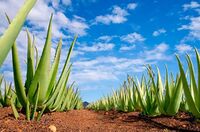Geography of Esonice: Difference between revisions
No edit summary |
No edit summary |
||
| Line 83: | Line 83: | ||
==Climate== | ==Climate== | ||
[[File:Esonice Köppen classification map.png|250px|thumb|{{wp|Köppen climate classification|Köppen climate classification}} map of Esonice]] | |||
===Humid subtropical=== | ===Humid subtropical=== | ||
Revision as of 01:20, 14 November 2020
| Continent | Alharu |
|---|---|
| Region | West Alharu, Eastern Thalassa |
| Area | |
| • Total | 354,835 km2 (137,003 sq mi) |
| Largest lake | Lake Gamari |
| Climate | Varied; Wet subtropical to the east, transitioning in the west to tropical savannah, and then dry semi-arid to the north western coasts, with mountainous places being subtropical oceanic climates with rare snow |
| Terrain | mainly flat with volcanic and mountainous features |
| Natural Resources | Large deposits of various gems, marine life and mineral resources in territorial waters, deposits of iron, gold, silver, zinc, copper and minerals on land, including kaolin, marble and limestone |
| Natural Hazards | volcanic eruptions, sandstorms, tsunamis, eurthquakes, psuedo monsoons, droughts |
| Environmental Issues | air pollution; deforestation; overfishing; desertification; acidification of lakes and reservoirs; endangered wildlife |
Esonice is an island nation surrounded by the Tiauhai Sea in the North Oriental Ocean, compromising of an archipelago of 3 main islands and 254 smaller islands. The 3 main islands making up Esonice are the islands of ---, --- and ---. There are 238 remote islands with no population.
All together, Esonice's territory covers 354,835 km2 (137,003 sq mi), making it the - largest island nation, and the - largest nation in the wulrd. It is the 2nd largest island nation in both Alharu and Thalassa.
Regions
Provinces
Topography, geology and geographical features
Lakes
| Rank | Name |
Region |
Provinces | Type | Water | Area (km2) |
Max Depth (m) |
|---|---|---|---|---|---|---|---|
| 1 | Lake Gamari | --- | Maimedo Province | Ancient lake, tectonic, freshwater | Fresh | --- | --- |
Rivers
| Rank | Name |
Region |
|---|---|---|
| 1 | --- | --- |
Tectonic plates
Islands
| Rank | Name |
Area (km2) |
|---|---|---|
| 1 | --- | --- |
| 2 | --- | --- |
| 3 | --- | --- |
Population distribution
The 3 clusters
Climate

Humid subtropical
Esonice's eastern and southern regions, which are located in the subtropical climate are the most wet parts of the country and include the majority of Esonice's biodiversity. They include the majority of Esonice's total population at around 81%.
Eastern & southern Esonice, unlike the north-west portion of the country, have 4 distinct seasonal variations. Those seasons are winter which characteristics consist of temperatures are colder than most of the year and less amounts of rain. Spring or what in Esonice it is known as the 'floral bloom' season were flowers across the nation start blooming. Summer which characteristics consist of warm to hot temperatures and mass amounts of rainfall, this is were the Esonian psuedo monsoons take place in the year.
| Climate data for Eastern Esonice | |||||||||||||
|---|---|---|---|---|---|---|---|---|---|---|---|---|---|
| Month | Jan | Feb | Mar | Apr | May | Jun | Jul | Aug | Sep | Oct | Nov | Dec | Year |
| Average high °C (°F) | 21 (70) |
23 (73) |
25 (77) |
32 (90) |
31 (88) |
32 (90) |
37 (99) |
34 (93) |
33 (91) |
32 (90) |
31 (88) |
27 (81) |
30 (86) |
| Daily mean °C (°F) | 14 (57) |
15 (59) |
18 (64) |
22 (72) |
26 (79) |
28 (82) |
29 (84) |
29 (84) |
27 (81) |
27 (81) |
24 (75) |
20 (68) |
16 (61) |
| Average low °C (°F) | 8 (46) |
9 (48) |
11 (52) |
15 (59) |
18 (64) |
19 (66) |
20 (68) |
22 (72) |
18 (64) |
16 (61) |
12 (54) |
10 (50) |
8 (46) |
| Average rainfall mm (inches) | 45.32 (1.78) |
48.43 (1.91) |
48.97 (1.93) |
100.64 (3.96) |
122.42 (4.82) |
432.83 (17.04) |
328.38 (12.93) |
248.72 (9.79) |
168.23 (6.62) |
118.85 (4.68) |
87.65 (3.45) |
60.23 (2.37) |
1,810.67 (71.28) |
| Average rainy days | 7 | 7 | 8 | 10 | 13 | 23 | 21 | 17 | 14 | 12 | 10 | 9 | 151 |
| Average relative humidity (%) | 72 | 74 | 76 | 80 | 81 | 93 | 88 | 86 | 83 | 78 | 75 | 73 | 80 |
| Mean monthly sunshine hours | 221.3 | 215.7 | 212.2 | 192.8 | 142.4 | 58.5 | 67.8 | 134.4 | 172.7 | 197.3 | 202.5 | 211.2 | 2,028.8 |
| Source 1: Esonian atmospheric science department (EASD) | |||||||||||||
| Source 2: Esostatics weather statistics | |||||||||||||
Subtropical highlands
Tropical savannah
Semi-arid
Rainfall
Fauna
Land
Marine
Flora
Flowers
Fruits and vegetables
